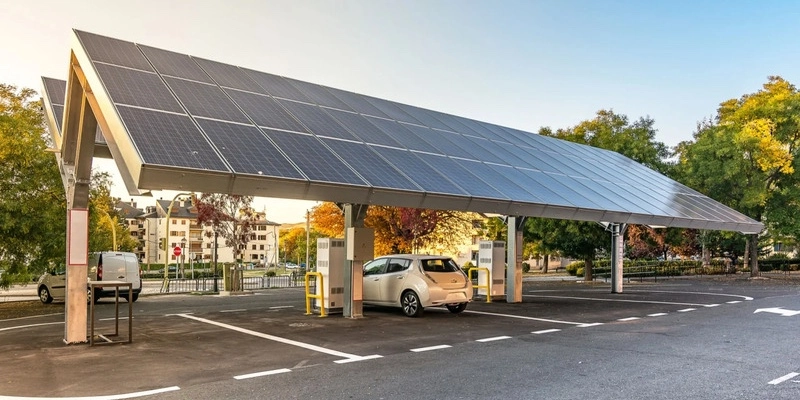The implementation of e-Credits in Europe is gaining momentum, with an increasing number of member states adopting this mechanism that allows for the valuation of renewable electricity in transportation.

Etienne Mingot, Business Development Manager for Electromobility at STX Commodities, informs Mobility Portal Europe:
“Thus far, six member states have implemented this system, and new countries such as Finland are preparing to adopt it in 2025.”
This progress occurs partly against a backdrop of pressure to comply with European Union regulations, which demand the adoption of stricter measures to decarbonise the transport sector.
According to the expert, the pioneering e-Credits markets are Germany, with its greenhouse gas reduction quota system (THG-Quote), and the Netherlands, with its Renewable Fuel Units (HBE) scheme.
The German model is one of the most successful in Europe, as it enables charging point operators to generate additional revenue by selling renewable electricity certificates to fuel suppliers.
This system, designed to reduce CO2 emissions in transportation, has created financial incentives that promote the use of clean energy and have helped accelerate the deployment of refuelling infrastructure.
Both Germany and the Netherlands have paved the way forward by incorporating this solution to value the renewable electricity used in charging electric vehicles (EVs).
At the same time, France is making strides in the implementation of e-Credits.
After a year and a half, the system operates more smoothly, although certain challenges related to the registration of charging points and the issuance of associated certificates persist.
In this regard, Mingot notes: “There is still some awareness-raising to be done, but most of the work is complete.”
What could enhance its operation?
Evolving the system to ensure that private charging is also valued at companies or logistics centres, a practice already underway in Belgium.
And not only that.
“This would elevate the decarbonisation targets for oil companies,” Mingot argues.
What is happening in Portugal?
Luis Castanheira, CEO of Mota-Engil Renewing, sees e-Credits as an opportunity to finance the installation of charging points in remote areas where it would typically not be economically viable.
“We could integrate e-Credits into our business plan easing the deployment of charging points in locations in locations where the investment return rationale is not obvious due to expected lower utilization rates or higher deployment costs due to grid upgrades,” he mentions to Mobility Portal Europe.
Furthermore, he suggests that the revenues generated from these could be used to ensure that the entire charging network operates exclusively on renewable energy, facilitating the transition to net-zero mobility.
“This will facilitate the transition Portugal needs to undertake to meet the country’s commitments towards the introduction of renewable energy in transport,” he emphasises.
Meanwhile, representatives from the German company Hardybarth comment to Mobility Portal Europe that they currently have a client with whom they are following the e-Credits principle.
“Each type of billing has its advantages and disadvantages, but if all companies follow a standardised structure, I could envisage this being feasible,” they explain.
As more European countries adopt this mechanism, energy efficiency and the use of clean energies in transport are expected to increase, propelling the continent towards its ambitious climate goals.
“The implementation of the system in Europe is progressing, with increasing awareness among member states,” highlights Etienne Mingot.
He underlines:
“There is a wealth of information available on the topic, and various NGOs, associations, and companies like STX are ready to support legislators in effectively establishing their own mechanisms as swiftly as possible.”
What challenges do states face in implementing e-Credits?
One of the primary challenges is the transposition of the Renewable Energy Directive (RED III).
Agreed upon at the end of 2023, RED III poses new objectives and challenges for European countries, which must adapt their regulations by May 2025.
However, as Mingot warns, not all member states are progressing at the same pace.
Some countries have achieved a significant level of maturity in their systems, while others remain in the preliminary stages of implementation.
“This variation could lead to delays in achieving full transposition,” he states.
Moreover, the e-Credits mechanism is not an absolute priority in the transposition of RED III, as countries tend to focus more on improving the proportion of renewable energy in their overall energy mix.
Nevertheless, this system plays a key role in the decarbonisation of transport.
From a practical perspective, they enhance the return on investment in charging points without the need for public funds, thereby promoting the deployment of new stations.
“e-Credits are relatively straightforward to implement, provided there is an existing implementation model,” the expert notes.
However, the decision on how to value renewable electricity is complex, as is the integration of a new system within existing frameworks.
According to the representative of STX Commodities, some countries opt for a model based on energy content, while others prefer a greenhouse gas (GHG)-focused approach.
“It is crucial that the registry is digitalised, using tools such as APIs, to facilitate the transfer of information from charging station operators and other relevant actors,” concludes Mingot.
Thus, collaboration between governments, companies, and experts will be vital for e-Credits to reach their full potential in the decarbonisation of transport in Europe.








